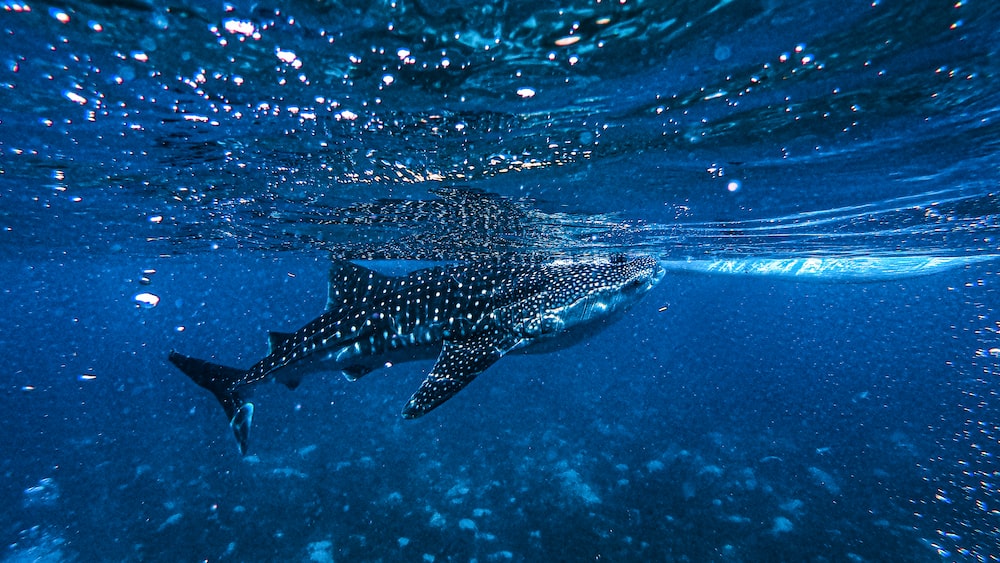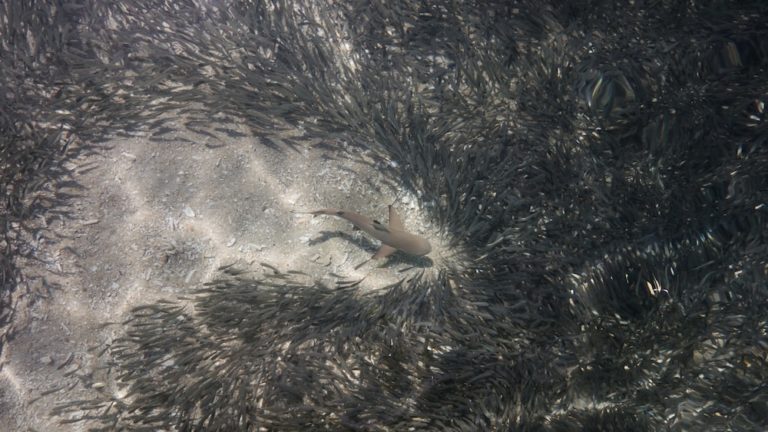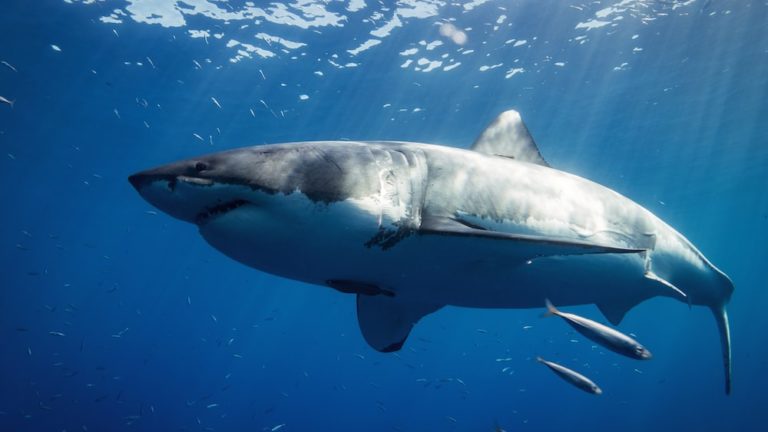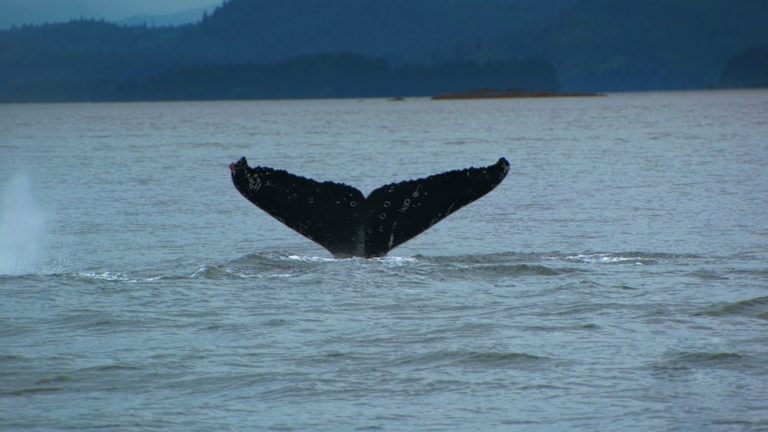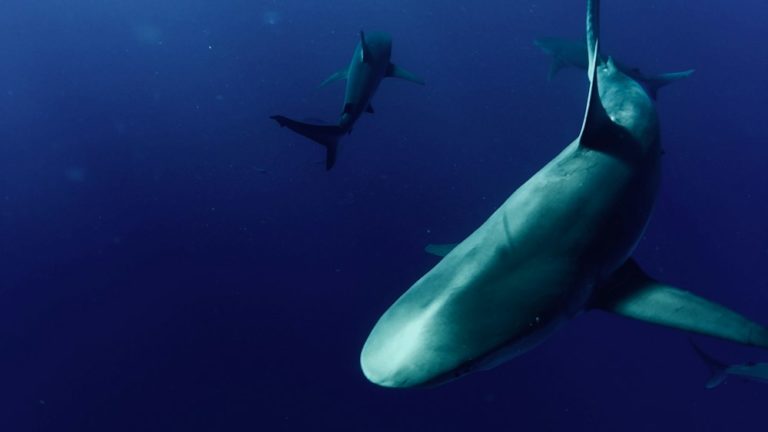Whale Sharks: Amazing Adaptations For Survival
Whale Sharks: Amazing Adaptations For Survival
Dive with me into the cerulean depths where the colossal whale shark reigns as a silent monarch of the sea. As the largest fish in the ocean, the whale shark boasts a suite of astounding adaptations that enables it to traverse the vast blue wilderness with poise. Marine life aficionados, you’re in for a treat, for today we unfurl the secrets behind the whale shark’s adaptations and how they master the art of survival in their liquid realm.
With a penchant for whale sharks, not just as curious swimmers but as living marvels of nature’s ingenuity, we shall explore the tapestry of their, often misunderstood, existence. These creatures are often mistaken for a mammoth mammal but are indeed the titans among fish, perfectly molded by evolutionary forces. Their journey through the epochs has armed them with an array of physical and behavioral traits that ensure their survival against the fickle fortunes of Mother Ocean.
For eco-adventurers and conservationists, understanding these adaptations is not just a source of fascination but a clarion call. It is a pathway to appreciate the delicate dance between life and environment, and a reminder of our responsibility to steward their future. So, let’s set sail on this educational odyssey, where every ripple and wave whispers the stories of these gentle giants, weaving wisdom and wit into the narrative of nature’s underwater spectacle.
Unveiling the Mysteries of Whale Shark Physiology
Embarking on this journey into the unknown, let’s delve into the unique physical characteristics and anatomical nuances that etch the essence of the whale shark. Their magnificent physiology is a masterclass in adaptation, tailored by the evolutionary pressures of the sea, a testament to the robustness and finesse required to endure and thrive in their diverse habitats.
Unique Physical Characteristics
The whale shark’s silhouette is unmistakable; a broad, flat head anchors a vast mouth that gapes open to swallow the sea’s bounty. Covered in a constellation of white spots and stripes over a charcoal gray backdrop, the distinctive patterning of the whale shark serves as its signature in the oceanic expanse. Like fingerprints to a human, no two whale sharks boast the same spot arrangement, making each individual as unique as a snowflake in a winter flurry.
This behemoth’s hide is armored with a thick, rubbery skin that can be up to 15 centimeters thick, creating a robust barrier against predators and the rough and tumble of the seas. Underneath the surface, there lies a skeleton entirely made of cartilage, lighter than bone, which gives these gentle giants both strength and flexibility to navigate their marine world. These features come together, creating a mosaic of whale sharks adaptations that have allowed them to survive eons in Earth’s most immense wilderness.

The whale shark’s distinctive patterning of spots and stripes, unique to each individual, is like fingerprints to a human, making them as unique as a snowflake in a winter flurry.
The Role of Size in Survival
In the theater of the ocean, size is a script that plays a crucial role in the survival narrative of the whale shark. Their imposing size – reaching lengths up to 40 feet or more – is not just a spectacle for our eyes but a survival mechanism that discourages would-be predators from considering them as prey. Enormous size couples with an agile grace, allowing these titans to glide effortlessly through the water, like clouds drifting across an azure sky.
Yet, the advantages of their stature extend beyond the mere intimidation of foes. The significant real estate of their bodies offers ample space for muscle attachment, enabling sustained, powerful swimming and a vast mouth that takes in copious amounts of water for filter feeding. These adaptations are evidence of how the whale shark’s evolution has been shaped by the need to conserve energy while foraging for sustenance in the endless blue desert.
Behavioral Adaptations of Whale Sharks
When we shift our gaze from form to function, we uncover the whale sharks adaptations that breathe life into these stately sea wanderers. Their behaviors, born from eons of adaptation and survival, are etched into their DNA and expressed in a balletic display that astounds and educates.
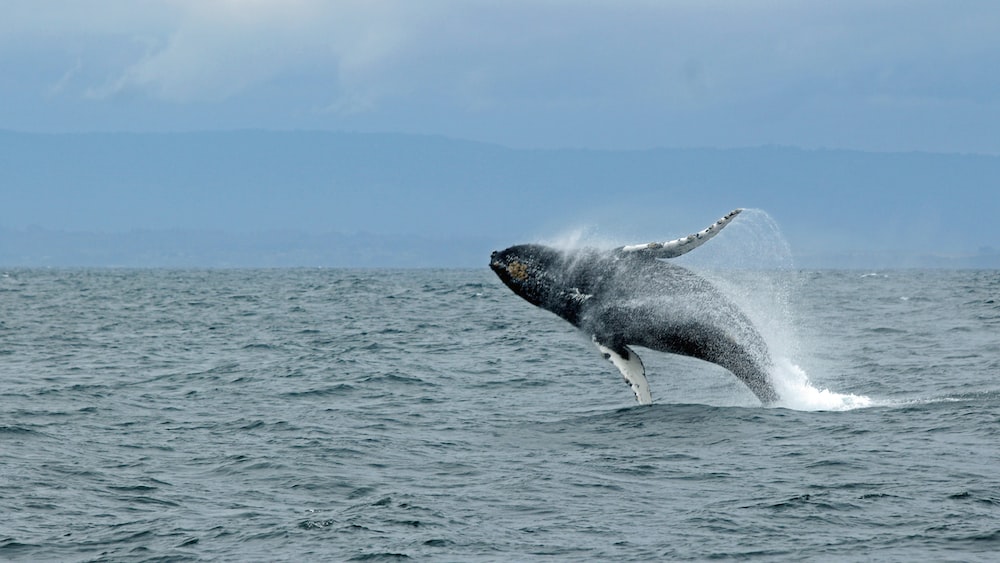
Filter Feeding: A Specialized Feeding Strategy
Among the most awe-inspiring spectacles is watching a whale shark engorge itself with plankton, tiny fish, and crustaceans through its intricate method of filter feeding. Unlike the terrifying teeth of some of its shark cousins, the whale shark opts for a less ferocious, more refined dining experience. Rows upon rows of minuscule, sieve-like structures called gill rakers act as a culinary colander, separating the edible jewels from the water’s embrace.
In an underwater waltz, they gently glide forward, mouth agape, as a living vacuum that draws in nutrient-rich waters to be meticulously sifted through their gill rakers. This highly specialized feeding mechanism allows the whale shark to feast effectively in the pelagic buffet, a fine choreography between motion and meal that sustains their massive bulk. However, it’s an all-day affair for these giants – continuously cruising at a relaxed pace, they make dining an exercise in efficiency and elegance.
Gentle Giants: The Social Behavior of Whale Sharks
Whale sharks, often depicted as lone behemoths, have a social side that’s as intriguing as their solitary pursuits. Deciphering the dances and dynamics within these gentle giants’ society offers illuminating insights into the fabric of marine life. Observations have showcased whale sharks aggregating in numbers, particularly when the ocean serves a seasonal banquet of spawn or plankton blooms.
These gatherings are less about socializing in the human sense and more about capitalizing on the concentrated food sources, a subtle reminder of nature’s pragmatism. Yet, these scenes also hint at possible social hierarchies or mating behaviors that remain largely enigmatic, enticing those of us immersed in the allure of aquatic life to continue our quest for understanding. Their non-aggressive nature, coupled with curiosity towards human divers, paints them as some of the sea’s most amiable inhabitants, a juxtaposition of colossal size and temperate demeanor that truly earns them the moniker of “gentle giants”.
Anatomical Marvels: Whale Sharks’ Sensory Adaptations
Let us now tune into the less visible but equally vital adaptations of the whale shark, which pertain to their sensory repertoire. The marine habitat presents a gauntlet of sensory challenges, and these giants have evolved anatomical marvels that eclipse what we know of terrestrial species.
Armored Eyes: Protection and Vision Enhancement
In adapting to the variegated patterns of light in the aquatic realm, whale sharks have developed an extraordinary ocular adaptation. Their eyes, akin to armored portholes on the canvas of their speckled skin, are equipped with protective dermal denticles, much like the tiny ‘teeth’ that cover a shark’s skin, safeguarding them from the perils of the deep. The whale shark’s armorous gaze serves as both shield and sentinel, providing sensory input critical for navigation and survival.
Moreover, these eyes are not static but can retract into the skull, a nifty trick that bolsters the whale shark’s defense mechanisms. Plus, the ability to dilate their pupils allows them to maximize vision in the ever-changing ocean lightscapes. This dynamic duo of adaptability and fortification bestows upon the whale shark a mastery over their marine realm, proving that even the gentlest of giants wield a knight’s armor against the vast ocean’s unpredictable jousts.
Whale sharks have developed an extraordinary ocular adaptation with protective dermal denticles, retractable eyes, and dilatable pupils, allowing them to navigate and survive in the aquatic realm.
Sensing the Environment: The Lateral Line System
Whale sharks possess a fascinating adaptation known as the lateral line system, a sensory network akin to an underwater sixth sense. This system of canals running along their flanks is filled with specialized cells that detect the most subtle water movements.
Imagine a whale shark effortlessly navigating the murky depths, its lateral line system detecting the vibrations of nearby schools of fish, orchestrating a stealthy approach. Small pressure changes in the water, created by the movement of animals or currents, send signals through this system, guiding the whale shark’s movement and facilitating prey detection.
This adaptation is particularly magnificent because it allows the whale shark to sense its environment beyond what its eyes can see, ensuring it remains an adept navigator of the vast sea. Whether following the trail of a current or closing in on a potential meal, the lateral line is the whale shark’s secret weapon, providing situational awareness that is crucial for survival.
The Genetic Secrets Behind Whale Sharks’ Adaptability
The genetic makeup of whale sharks is like a treasure map, leading us to a deeper understanding of their incredible adaptations. By unlocking these genetic secrets, researchers can unravel the mysteries behind the whale sharks’ massive size and longevity, which are key factors in their survival in the variable marine landscape.
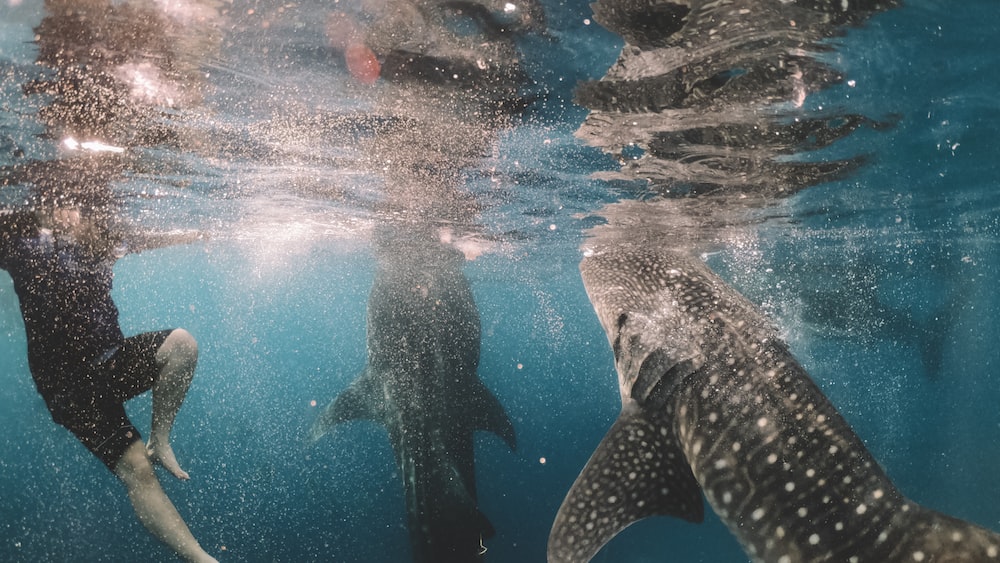
DNA Insights: Understanding Whale Shark Longevity and Growth
It’s not just their colossal size that is mesmerizing; whale sharks have a genetic toolkit that equips them with remarkable longevity. Scientists have sequenced their DNA, revealing genetic characteristics that could explain their ability to live for decades, maybe even a century.
Their growth rate provides clues to their life history; whale sharks do not reach sexual maturity until they are about 25 to 30 years old. Research suggests that certain genes associated with DNA repair and cancer suppression might be the linchpin to their long lives. Understanding these adaptations in their DNA does more than satisfy curiosity – it’s a stepping stone to ensuring their continued existence in our oceans.
Reproductive Strategies: Ensuring Species Continuity
Among whale sharks’ many adaptations, their reproductive strategies stand out as marvels of nature. Bearing live young, a female whale shark is essentially a swimming nursery, with the capability to gestate over 300 pups at once!
Fascinatingly, there’s a tinge of mystery surrounding their mating rituals, as encounters are seldom witnessed. But once mating occurs, whale sharks employ an unusual reproductive mechanism: they can store sperm and stagger the fertilization of their eggs. This staggering strategy ensures that, despite the infrequency of encounters with potential partners, the whale shark can optimize its reproductive success over time.
The implications are far-reaching – babies can be born months apart, creating a constant influx of juvenile whale sharks into the ocean’s tapestry, boosting the population’s resilience against threats. It’s an enduring cycle, crafted by evolutionary wisdom, helping to maintain the legacy of these gentle giants across generations.
Whale sharks have an unusual reproductive strategy, where they can store sperm and stagger the fertilization of their eggs, allowing them to optimize their reproductive success over time and boost the population’s resilience against threats.
The Whale Shark’s Habitat: Adaptations to a Diverse Ecosystem
Whale sharks are the quiet ambassadors of tropical seas, gracefully traversing a spectacular range of aquatic environments. These nomadic leviathans have honed their physiological adaptations to thrive in the coral reef systems, open seas, and coastal areas that comprise their diverse habitat.
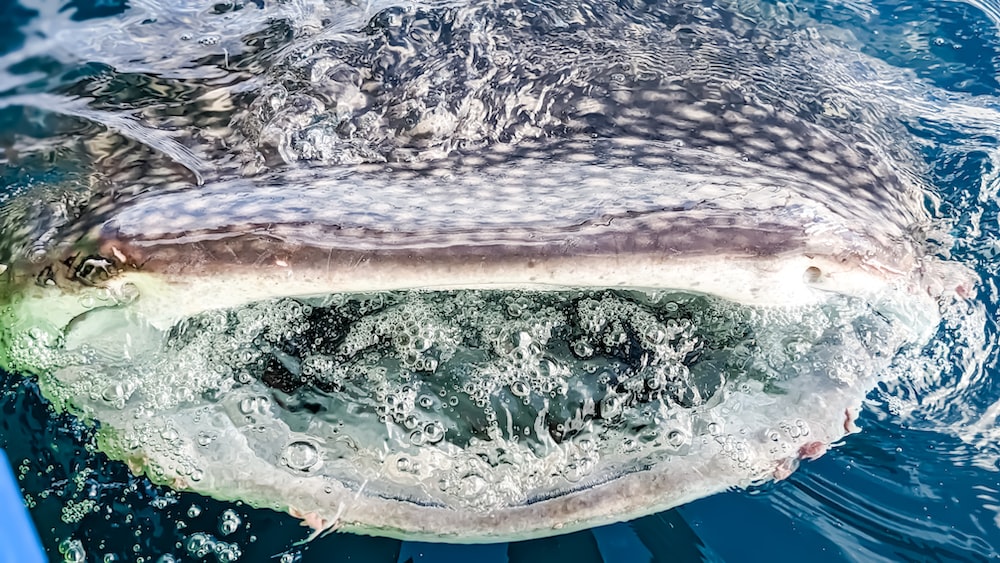
Geographic Distribution and Migration Patterns
Whale sharks are a globetrotting species, their distribution skirting the warm waters of the Earth between latitudes 30°N and 35°S.
- In an annual ballet, they migrate thousands of miles, breeding and feeding.
- They frequent nutrient-rich upwellings and places where the sea churns with life, like coastal zones where rivers meet the ocean.
These migration patterns aren’t random; they are closely tied to the availability of plankton and small fish, their primary food. Scientists track these gentle giants using satellite tags, unveiling migration maps that read like sea stories, each shark tracing its own indelible path across the oceans.
Temperature Regulation: Thriving in Varied Water Conditions
Even as we marvel at their grace and magnitude, whale sharks reveal an exceptional ability to regulate their internal temperatures. Unlike many fish that are strictly cold-blooded, whale sharks can be described as regionally endothermic.
This means that while parts of their bodies can maintain a temperature slightly higher than the surrounding water, they still require warm seas to thrive. This sophisticated thermoregulation allows whale sharks the agility to dive deep and rise again, traveling through layers of the ocean with varying temperatures without the need to constantly warm up in sunny shallows.
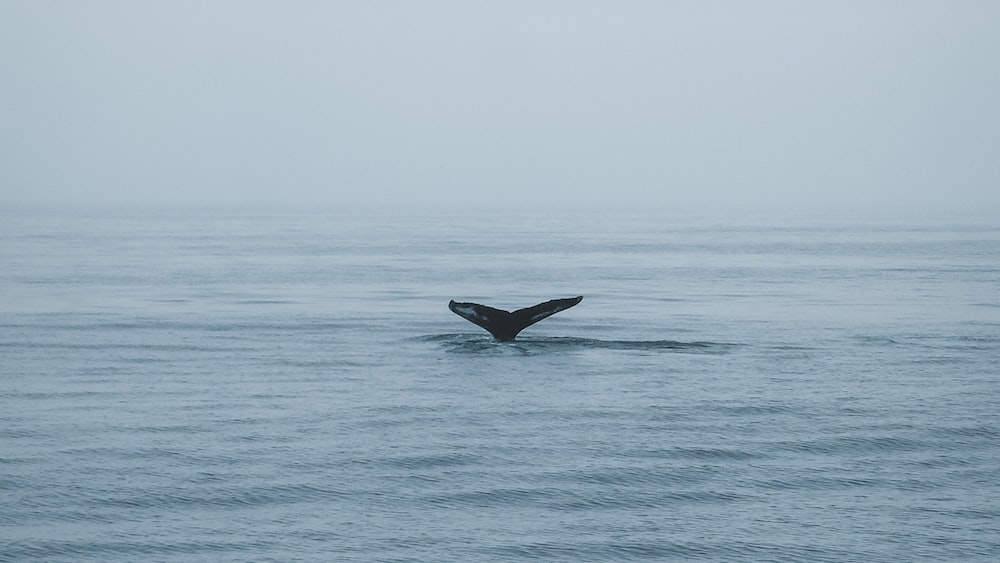
Conservation Efforts for Whale Sharks
Spearheading the charge to protect these colossal creatures of the sea are numerous conservation initiatives, each fold in their massive, spotted skin testament to the struggles they face. The conservation efforts for whale sharks aren’t simply about safeguarding a species; they are about preserving the balance of marine ecosystems where these ambassadors of our oceans reign.
Human Impacts and the Need for Protection
Human activities have cast a dark shadow over the majestic whale sharks that gracefully glide through our oceans. Overfishing strips away their food sources, while marine pollution chokes their serene habitats. But perhaps the most direct hit comes from the harvesting of these gentle creatures for their meat and fins, driven by a demand steeped in ancient customs and modern luxury.
With each passing year, the specter of boat collisions poses a sinister threat, and the unyielding clutch of plastic waste marks the once sparkling seascape. The tale of the whale shark is not just one of natural wonder; it’s a sobering reminder of human impact and the urgent need for protection. These spotted leviathans may have navigated Earth’s oceans for millennia, but without our help, their future swims in uncertain waters.
Campaigns to safeguard whale sharks are more than just conservationist cries; they are essential lifelines. Education serves as a beacon, guiding us to understand the significance of this shark, commonly known as the whale shark. We are summoned to act, to cast a net of protection over these ocean giants that so depend on us to shift the tides from harm to harmony.
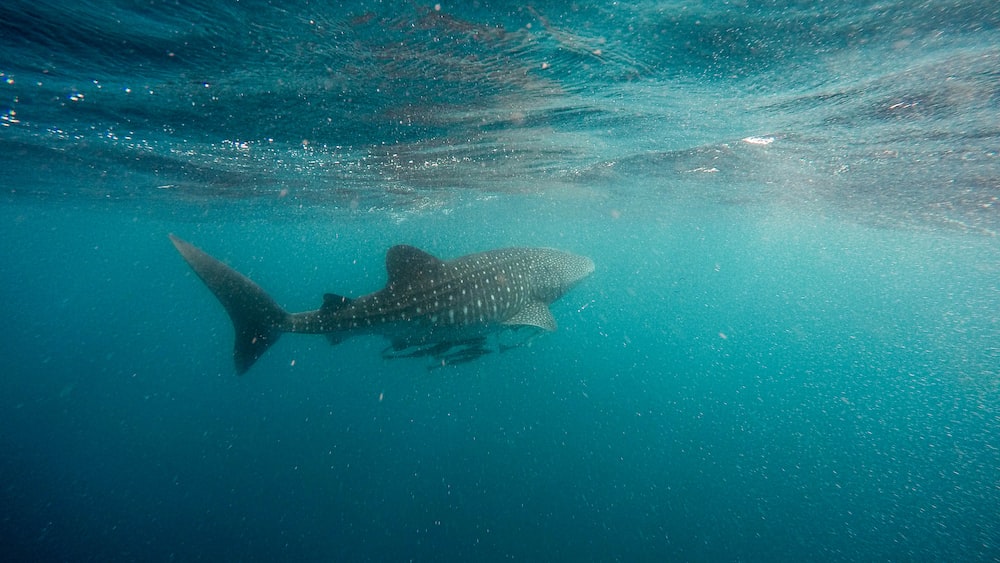
Global Initiates and Success Stories in Whale Shark Conservation
In the grand ballet of conservation, glimmers of hope sparkle like sunlight on ocean waves. Global initiatives have risen from the depths of necessity, knitting a web of protection for whale sharks across the seas. The Convention on International Trade in Endangered Species (CITES) heralds a legacy of legislation, while eco-tourism offers a look-but-don’t-touch approach that sustains both shark and society.
Organizations like the Whale Shark and Oceanic Research Center in Honduras spotlight the shark as the main protagonist in their conservation narrative, with success stories trailing in their wake. Their work, along with others like the Marine Megafauna Foundation, turns the tide, churning out data and solutions that buttress whale sharks against extinction’s chilling embrace.
Moreover, the synergy between local communities and global entities channels a chorus that sings for whale shark survival. Initiatives like ‘citizen science’ projects empower every Joe and Jane with a wetsuit to contribute to research, morphing into guardians of the marine realm. These stories nourish the heart of conservation, fostering actions that echo the resilience of whale shark adaptations.
Global initiatives, legislation, eco-tourism, research organizations, and citizen science projects all contribute to the conservation and survival of whale sharks.
FAQs
1. What enables whale sharks to filter feed effectively?
Whale sharks filter feed effectively thanks to their immense gill slits and specialized sieve-like structures called gill rakers. These natural marvels trap plankton and small fish — their primary food — while the water flows out, resembling a colossal living sieve that captures the ocean’s bounty in its gentle giant’s gulp.
2. How do whale sharks’ eyes protect them in their marine environment?
The eyes of whale sharks protect them, sporting an armored layer of dermal denticles, a trait indicative of their shark lineage. This evolutionary shield reduces injury from debris and predators, playing a vital role in survival within their dynamic marine environment.
3. Why are whale sharks referred to as gentle giants?
Whale sharks are referred to as “gentle giants” due to their docile nature and lack of threat to humans. Despite their immense size, these sharks exhibit a calm demeanor, moving through the water with a placid grace as they filter feed, unfazed by the presence of awe-struck humans.
4. What are the key conservation challenges facing whale sharks today?
The key conservation challenges facing whale sharks today center around habitat destruction, unregulated tourism, and bycatch in fishing operations. These hurdles demand immediate action to ensure the giants’ continued reign in the blue frontier.
Conclusion
Diving into the world of whale sharks unveils a treasure trove of remarkable adaptations honed by evolution’s unyielding currents. Their existence tells a story that stretches back to ancient seas, a tale that continues to unfold amid our modern struggles to maintain ecological balance. We’ve witnessed their awe-inspiring size, secretive behaviors, and the innovative ways they’ve attuned to the global stage they inhabit.
Yet the narrative of whale sharks adaptations shared today transcends marine biology’s confines; it touches upon our own place in the cosmos, momentarily erasing the boundaries between human and shark. It invites reflection on how intertwined our futures truly are, underscoring a reality where their survival is inextricably linked to our own actions or inaction.
As I resurface from this proverbial deep dive, I find solace in knowing that together we can make waves that bolster conservation efforts, ensuring these gentle giants continue to roam the seas for generations to come. Until then, I’ll hold onto the hope that the ocean’s whispers will not fall on deaf ears. Keep exploring, keep conserving, and above all, keep cherishing these incredible creatures.
Fare thee well in your aquatic adventures, Jasper Flynn

